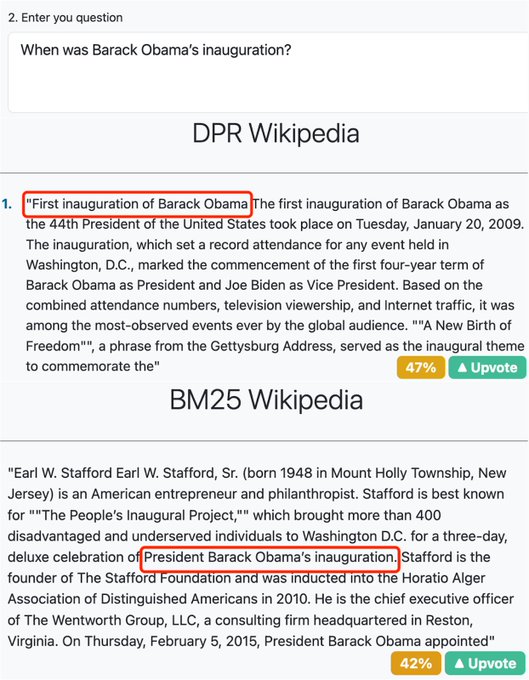We are excited to announce that “
@UKP_SQuARE
: An Interactive Tool for Teaching Question Answering” has been accepted at the Workshop on Innovative Use of NLP for Building Educational Applications
@AclSigedu
held at
#ACL2023
#ACL2023NLP
! 🎉 1/x
1
2
10
Replies
You can read our pre-print here 📜 This is the first time we used
@UKP_SQuARE
for education 4.0!! 🤯 – and in this thread 🧵 we’ll try to explain why this is so extraordinary. 2/x
1
0
2
QA is an indispensable topic in any NLP course 📚. It is also an ideal scenario for teaching various NLP topics such as information retrieval 🔎, explainability 🧑🏫, and adversarial attacks 👊 among others. But how can we teach in an interactive and fun way? 3/x
1
0
2
We propose to use the
@UKP_SQuARE
platform to conduct an interactive lecture where the protagonists are the students 🤯 Students can actively learn different QA concepts, related NLP topics, and get hands-on experience via interacting with UKP-SQuARE 🧑💻 5/x
1
0
2
Students can compare different QA formats and models with
@UKP_SQuARE
(e.g., span extraction and multiple choice). Lecturers can start the class with real demonstrations of QA models and from there, explain these architectures. 6/x
1
0
2
To get a more intuitive understanding of the difference between lexical retrievers and semantic retrievers, students can easily compare the performance of different retrievers for a given question on
@UKP_SQuARE
. 7/x
1
0
2
The following example shows that Dense Passage Retriever (DPR) retrieves a document relevant to the question (i.e., the same topic) while BM25 retrieves a document with a different topic although it contains all the tokens from the question. 8/x
1
0
2
Students can also learn explainability methods with
@UKP_SQuARE
. Our interface allows them to generate saliency maps. In this way, lecturers can start the lesson with real demonstrations of these explanations to motivate the class and the subsequent technical descriptions. 9/x
1
0
2
The following saliency map shows SpanBERT can’t capture the importance of ‘not’ and therefore returns a wrong answer: 10/x
1
0
2
Similarly,
@UKP_SQuARE
enables students to use adversarial attack methods e.g. HotFlip. These real-time demonstrations can motivate the technical part of the lecture and help students to focus. In particular they can be checkpoints for students who lost track of the lecture. 11/x
1
0
2
UKP-SQuARE can also be used to teach more advanced QA systems, e.g. graph-based QA models and Multi-Agent Systems. In addition to the teaching scenarios above we also propose homework assignments based on UKP-SQuARE that let students analyze QA models using all our QA tools. 12/x
1
0
2
The positive feedback from the students shows
@UKP_SQuARE
facilitates their learning process, makes the class more dynamic and engaging, and encourages us to continue integrating it into our
#NLProc
course. 13/x
1
0
3
End of 🧵. We would love to hear your feedback and suggestions! You can find
@UKP_SQuARE
here: and their code here: . Feel free to contact
@HaritzPuerto
for any follow-up questions! See you in Toronto 🇨🇦!
0
0
3







